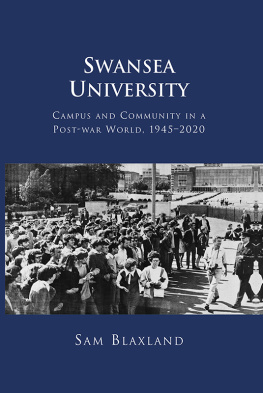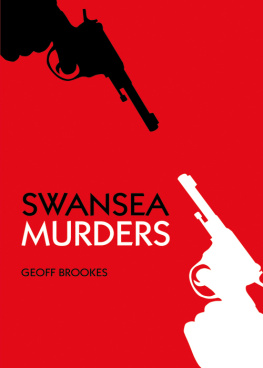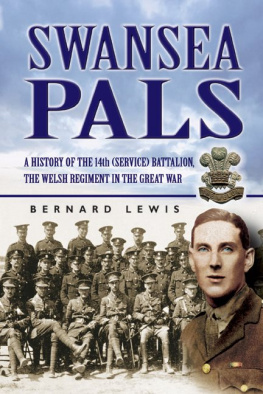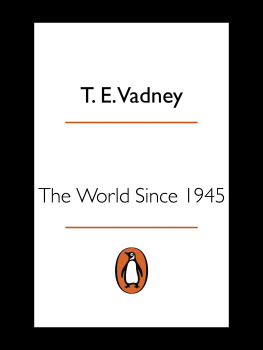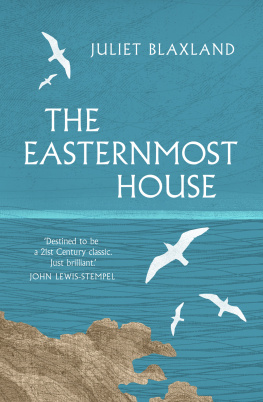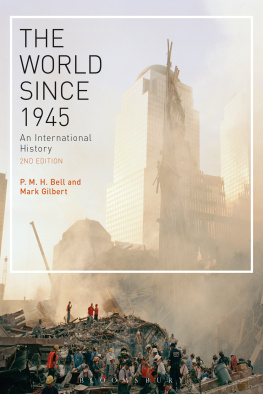Sam Blaxland, 2020
All rights reserved. No part of this book may be reproduced in any material form (including photocopying or storing it in any medium by electronic means and whether or not transiently or incidentally to some other use of this publication) without the written permission of the copyright owner except in accordance with the provisions of the Copyright, Designs and Patents Act 1988. Applications for the copyright owners written permission to reproduce any part of this publication should be addressed to The University of Wales Press, University Registry, King Edward VII Avenue, Cardiff CF10 3NS www.uwp.co.uk
British Library Cataloguing-in-Publication Data
A catalogue record for this book is available from the British Library.
ISBN 978-1-78683-606-9
e-ISBN 978-1-78683-608-3
The right of Sam Blaxland to be identified as author of this work has been asserted by him in accordance with sections 77 and 79 of the Copyright, Designs and Patents Act 1988.
The publisher has no responsibility for the persistence or accuracy of URLs for any external or third-party internet websites referred to in this book, and does not guarantee that any content on such websites is, or will remain, accurate or appropriate.
Cover image: Swansea student protest, from the 1968-9 Swansea Student Association handbook, by permission Reach Publishing Services Ltd.
A S WE CELEBRATE THE 100th anniversary of the founding of the University College of Swansea, we reflect not only upon one hundred years of growth and progress for our institution, but also upon the development of a rich cultural history, forged by our community. For the true story of Swansea University cannot be unravelled in a linear tale of institutional and academic change alone. It must also trace the influence of our students and staff members, past and present, upon our evolving culture over the course of one hundred years.
It is therefore entirely fitting that the author of this volume, Dr Sam Blax-land (himself an alumnus and staff member), has opted to focus not only upon the what and when of our story but also the whom. First-hand accounts and reflections, based on a series of oral interviews with students, staff and alumni, are woven through his authoritative post-Second World War chronology.
Together, they articulate the rise of youth culture and the shifting nature of student and staff relations. They illustrate the interdependent relationship between our physical campus and our community, and chart our changing position within our region, Wales and the wider world, from political action to local regeneration. They highlight our pride in being a beacon for Welsh language, culture and heritage, and paint a vivid picture of our journey, crafted by those who know us best.
As this book makes clear, our current standing, from our many international partnerships to our close ties with industry, owes much to our past. So too does our culture. For Swansea University has never been an educational institution alone. It is also a dynamic, ever-growing community that is justifiably the focus of this centenary publication, and of which we are all proud to be a part.
Professor Paul Boyle CBE FBA AcSS FRSGS
Vice-Chancellor, Swansea University, May 2020
T HIS BOOK HAS BEEN WRITTEN with a great deal of support and guidance from people in and around Swansea University. I want to thank those in the College of Arts and Humanities and beyond who entrusted me with the task and gave me a completely free hand to approach it in the way I have done.
At the core of the research over the past three years and therefore at the centre of this book too has been The Voices of Swansea University oral history project. Thanks are due to every single interviewee, listed in the bibliography, for giving up their time to speak with me at length. Some went that extra mile and offered a great deal of further help and support. In particular, I am especially grateful to Tom and Barbara Conway, Edward David, Roger and Christine Edwards, John and Nan Flowerdew, Judy Ganz, Andrew Green, David Herbert, Jill Lewis, John and Diana Lomax, Prys Morgan, Mary Morgan and Viv Phillips.
Whilst they were not formal interviewees for the oral history aspect of this book, others with connections to the university offered to meet informally to discuss my work and offer pointers, guidance, thoughts and musings. I am indebted to Rebecca Clifford, Mike Charlton, Aled Eirug, Ralph Griffiths, Hugh Jones, John Law, Steve Littlejohns, Gwyn Parry, Chris Stray, Anne Thomas, John Tucker, Jen Urquhart and Lynn Williams. For further tips, ideas and comments I am grateful to Tom Allbeson, Robert Anderson, Malcom Crook, Sarah Crook, Andrew Edwards, Bill Jones, Daryl Leeworthy and Alwyn Turner. Members of Swansea Universitys History and Research Collections committee, chaired by Hywel Francis, also deserve thanks for their advice and for keeping me on my toes.
Many people in the universitys management team, its alumni office, and marketing and recruitment department provided useful materials or the names of contacts. I owe thanks to former Pro-vice-chancellor Iwan Davies for his support from the beginning, as well as Catrin Harris, Sian Jones, Gerard Kennedy, Richard Lancaster, Suzanne Oakley, Aimee Pritchard, Helen Rogers, Liz Shouaib, Delyth Thomas, Sally Thurlow and Ffion White.
History Department colleagues and students have also made work an unendingly pleasant place to be, particularly my friends Charlie and Cate Rozier, Matthew Frank Stevens, Teresa Phipps and Martin Johnes. The latter two also read parts of this work and gave very helpful feedback. One of my talented dissertation students, Dylan Monteiro, was responsible, through his independent research, for alerting me to fresh new material and ideas particularly for . Another undergraduate, Kira Hinderks, gave up multiple days of her time to volunteer writing summaries of the oral history collection. In doing so, she leaves a permanent contribution for future generations of researchers and scholars, who will be in her debt. Our departments two PhD students working on the universitys history, Karmen Thomas and Jay Rees, have been a source of information and good humour, as well as people who are always willing for me to pass ideas by them. Most importantly, Louise Miskell and Toms Irish have been the most amazing mentors and colleagues, giving up a great deal of time and effort to offer patient suggestions and guidance as this work progressed, including offering detailed comments on the final draft.
However, this research has not solely confined me to Swanseas History Department. The entire team at the universitys Richard Burton Archives, including Katrina, Sue, Sarah, Stacy and Stephanie, are always friendly and helpful. But there is one member who cannot be thanked enough: Emily Hewitt has been my eyes and ears regarding source material since the very beginning, and has never wavered in offering tips, guidance and support particularly in the matter of oral history; she is the one who manages and curates the collection that forms the bedrock of this book. By pointing me in the right directions on numerous occasions, she saved me enormous amounts of time and I owe her a great deal. This final product simply could not have come together had she not been on hand, often at short notice, to help with images, copyright issues and referencing queries, as well as providing general encouragement. Regarding other material and sources, I was humbled to be given access to the personal collections of Roger Edwards, Margaret and Tudor Jones, John and Diana Lomax, Viv Phillips, Linda Snoswell, Peter Thomas (via his daughter Anne Thomas) and Murray Thomson.


